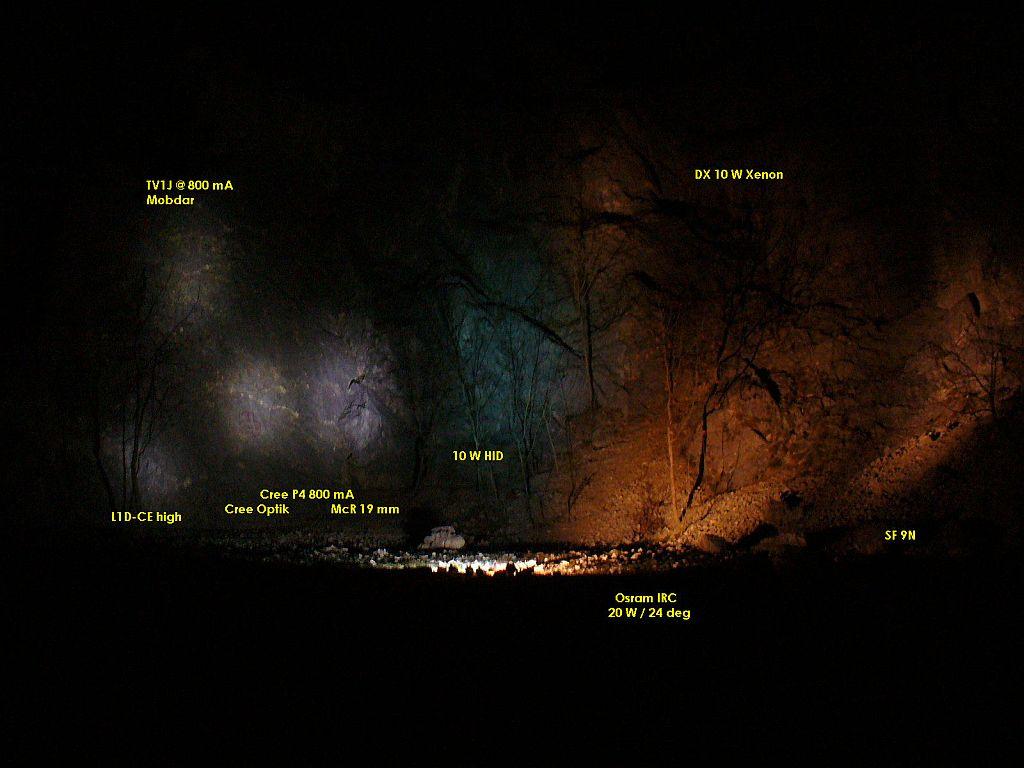cedarcreek
Newly Enlightened
This weekend (April 28-29, 2007) is a big orienteering relay in Sweden. It's called "Tiomila" or "10Mila", and the featured event, the Men's relay, starts in the dark with headlamps, and finishes 100km (61 miles) later during the daylight.
In the build-up to television coverage of the event, the TV people did a feature story on a controversy surrounding new technology headlamps. Now, some of what I'm writing is presumption on my part, because I don't speak Swedish, but...
The controversy is based around a rule that says headlamps are limited to 20 Watts. In the past, the state-of-the-art was a 20W Halogen. Today, though, there are Metal Halide HIDs, and LEDs by several different companies, and people are wondering if they should try to limit the output to something resembling a 20W Halogen, or if they should just set loose an arms race where anything goes as long as it doesn't use more than 20 Watts.
My understanding is that they have taken the second road. I guess it's easier to plug in a meter between the lamp and the batteries and measure power than it is to define some maximum light output and try to measure that.
The video is about 3 minutes long and is here:
http://svt.se/svt/play/video.jsp?a=814570
Click on "Pannlampan het inför 10-milanatten"
and then on "sport070425pannlampa.asx" or "...ram"
If you want to see the internet coverage of Tiomila, go here during the event:
http://www.10mila.se/
The headlamps will be visible at the start of the Men's relay, which is:
11pm Saturday in Stockholm
5pm Saturday in New York City
7am Sunday in Sydney, Australia
There are three other events (during the daylight), and coverage starts:
10:30am Saturday in Stockholm
4:30am Saturday in New York City
6:30pm Saturday in Sydney, Australia
The internet coverage will work for over 24 hours. (But again, the best chance to see thousands of runners with headlamps is starting at the first set of times I listed. And again, the internet video links won't be visible until the second set of times I listed.
In the build-up to television coverage of the event, the TV people did a feature story on a controversy surrounding new technology headlamps. Now, some of what I'm writing is presumption on my part, because I don't speak Swedish, but...
The controversy is based around a rule that says headlamps are limited to 20 Watts. In the past, the state-of-the-art was a 20W Halogen. Today, though, there are Metal Halide HIDs, and LEDs by several different companies, and people are wondering if they should try to limit the output to something resembling a 20W Halogen, or if they should just set loose an arms race where anything goes as long as it doesn't use more than 20 Watts.
My understanding is that they have taken the second road. I guess it's easier to plug in a meter between the lamp and the batteries and measure power than it is to define some maximum light output and try to measure that.
The video is about 3 minutes long and is here:
http://svt.se/svt/play/video.jsp?a=814570
Click on "Pannlampan het inför 10-milanatten"
and then on "sport070425pannlampa.asx" or "...ram"
If you want to see the internet coverage of Tiomila, go here during the event:
http://www.10mila.se/
The headlamps will be visible at the start of the Men's relay, which is:
11pm Saturday in Stockholm
5pm Saturday in New York City
7am Sunday in Sydney, Australia
There are three other events (during the daylight), and coverage starts:
10:30am Saturday in Stockholm
4:30am Saturday in New York City
6:30pm Saturday in Sydney, Australia
The internet coverage will work for over 24 hours. (But again, the best chance to see thousands of runners with headlamps is starting at the first set of times I listed. And again, the internet video links won't be visible until the second set of times I listed.
Last edited:


